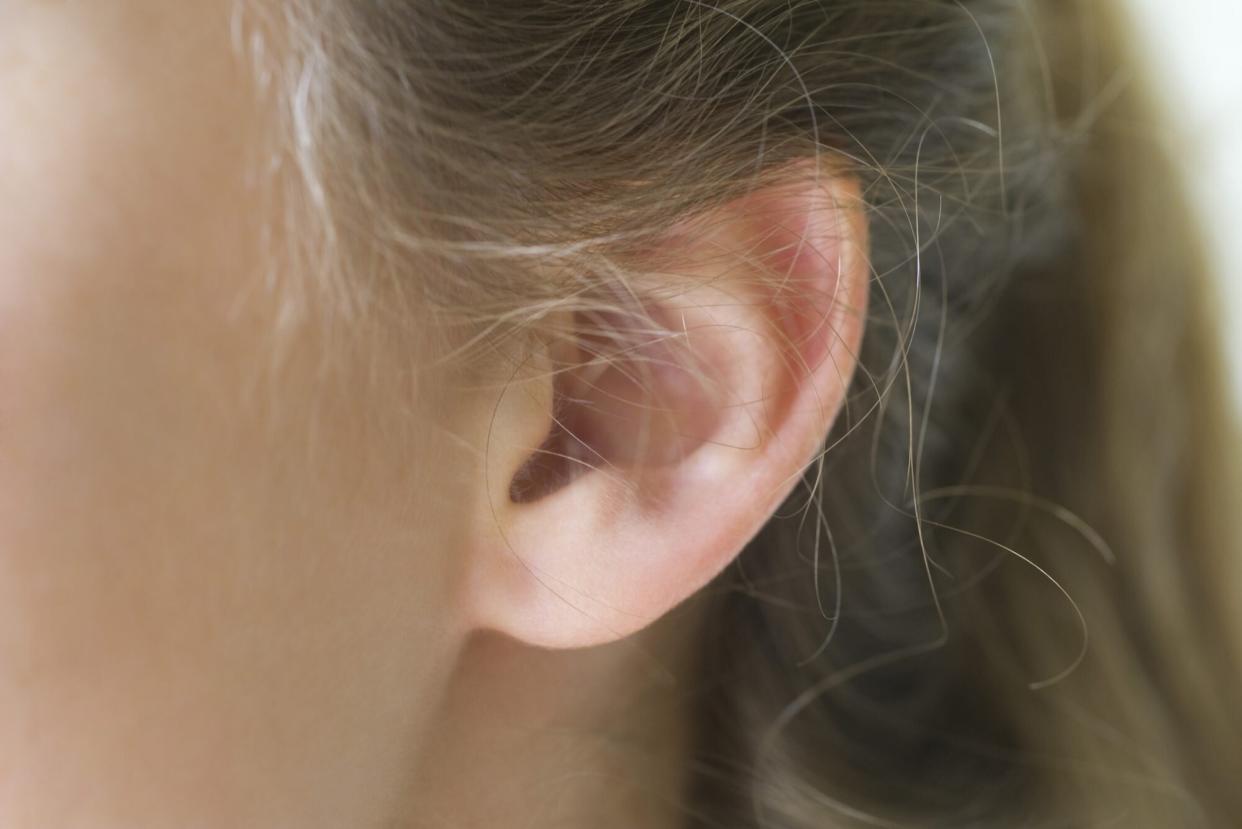Here's Why You Should Pierce Your Ears with a Needle and Not a Gun

Getty Images/Zen Shui
Remember when Annie let her twin pierce her ears in the Parent Trap so they could convincingly swap places and rekindle their parents' love affair? That was a seminal moment in my childhood. I'll never be able to unsee the needle piercing Annie's earlobe, straight into a little piece of a green apple. But, as it happens, it turns out they had the right idea. Well, sort of.
RELATED: Attention! Beautyblender Is Releasing a 10-Pack of Their Cult Sponge
I know this because I learned the hard way. I've had my ears pierced twice, but neither time has really worked out for me. I was 8 the first time I had them pierced, and it was done how everyone else did it — with a piercing gun. Unfortunately, for me, my dad decided to swap out my posts early for a pair of silver earrings, and that manifested in an infection that basically caused my ears to swallow not one, but two earring backs.
One trip to the doctor later, I had to let my piercings close. I was devastated.
My second foray into piercing also happened with a gun. This time there was no infection, but I noticed soon thereafter that my ears got red and itchy when I wore earrings. They could have been 18 karat gold, and it wouldn't make a difference. So, aside from special occasions, I avoided wearing earrings and still do.
RELATED: Six Things Your Dentist Desperately Wishes You Knew
Now, one of the benefits of my career is that I get to spend my days researching things that are super interesting to me. This lead me to find out that I most likely have a metal allergy that is a result of me piercing my ears with a gun. Mind. Blown.
All of this came to light when I sat down with dermatologist extraordinaire Dr. Rachel Nazarian to pick her brain about the topic of my itchy, irritated ear lobes. First and foremost, how do metal allergies manifest themselves? Dr. Nazarian explains, "A metal allergy, such as nickel allergy, is when the skin's immune system is triggered after exposure to a specific item. For classic cases of nickel allergy, after nickel touches your skin, your skin responds by developing red, itchy patches or bumps, sometimes even weeping blisters or cracks. The area affected is typically that which has had direct contact to the metal. Allergy to nickel in earrings is usually around the lobe of the ears."
RELATED: Confessions of a Spray-Tan Virgin
Does that sound like something that happens to you? Here's what you should do if it is. Dr. Nazarian suggests that you go to a derm or and allergist for patch testing, in which a doctor can test multiple common sources of contact allergy with small stickers that have trace amounts of metals that are placed on your skin and re-evaluated a few days later. That way, your physician can determine if you have an allergy to nickel or any other metal.
Dr. Nazarian also noted that, "the severity of your allergy is influenced by how much exposure skin has to the metal." She continues, "Although both earrings and bracelets may have high sensitivity to causing a contact allergy, earrings that are tighter and have greater contact with the skin (such as studs) would be more likely to trigger a reaction that a loose bracelet."
RELATED: Self-Tan With These Glow Pads, Shave Your Legs Less Often
And how does all of this come about? It could be the piercing gun that was used. Piercing guns use a standard depth to pierce each ear, and oftentimes, the earrings used are higher in nickel content. Dr. Nazarian's words say it best, "The tighter the fit, the higher the rate of nickel allergy." Further, Dr. Nazarian explained to me that classic piercing guns not be fully sterilized (even after they are re-used on different people—ICK) even though the earring used is replaced.
Instead, Dr. Nazarian suggests getting your piercings done with a needle — and specifically a sterile, surgical grade strainless steel needles. "This allows the piercer to tailor each piercing to the appropriate width of the ear lobe," she says. Bydoing this, sensitivity to nickel allergy and allergic reaction are decreased, as is the risk of a bacterial infection.
Man, do I wish I had known this earlier. As for my ears, I'm thinking about a third attempted tango with pierced ears, but I'll definitey be taking the needle route.

